You’ve probably heard someone suggest that you should “look professional” for important events like interviews, meetings, or a big day at the office, but have you ever stopped to consider what this phrase actually means; that’s exactly what we’ll be doing today.
- Looking Professional Means…
- 1. Dressing According to the Conventions of Your Profession
- Outfit Rundown
- 2. Following Workplace Norms
- 3. Illustrating Commitment to Your Company
- Outfit Rundown
- 4. Inspiring Confidence
- Outfit Rundown
- 5. Be Prepared, Active, and Aware
- 6. Being Detail-Oriented
- 7. Consistently Appearing Professional
- 8. Dressing to Make Yourself “Feel” Professional, But Also Like Yourself
- Three Different Professional Outfits
- Conclusion
- Outfit Rundown
By genuinely understanding this term, you’ll be better prepared to dress professionally and appropriately when it matters. Let us know in the comments what you think “dressing professionally” means, and then we can compare notes. After all, a true professional leverages the insight and opinions of those around him.
Looking Professional Means…
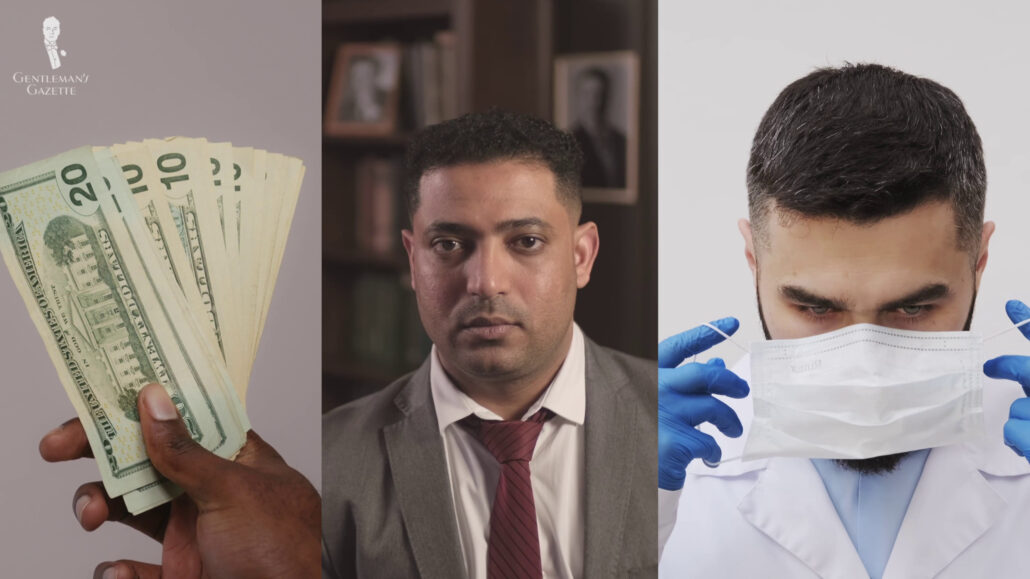
Defining “looking professional.” Generally speaking, the term “looking professional” in this context can have two meanings. The first relates to looking like someone who has a professional occupation, by which we mean a job like a banker, lawyer, or doctor. The second meaning more generally indicates that someone looks like a professional, which is to say, someone who looks like they know what they’re doing and that he’s doing it well.
Today’s guide primarily deals with the second meaning, as we want to help everyone look and feel professional no matter what they do. But, our suggestions will also apply if you’re in the first category.
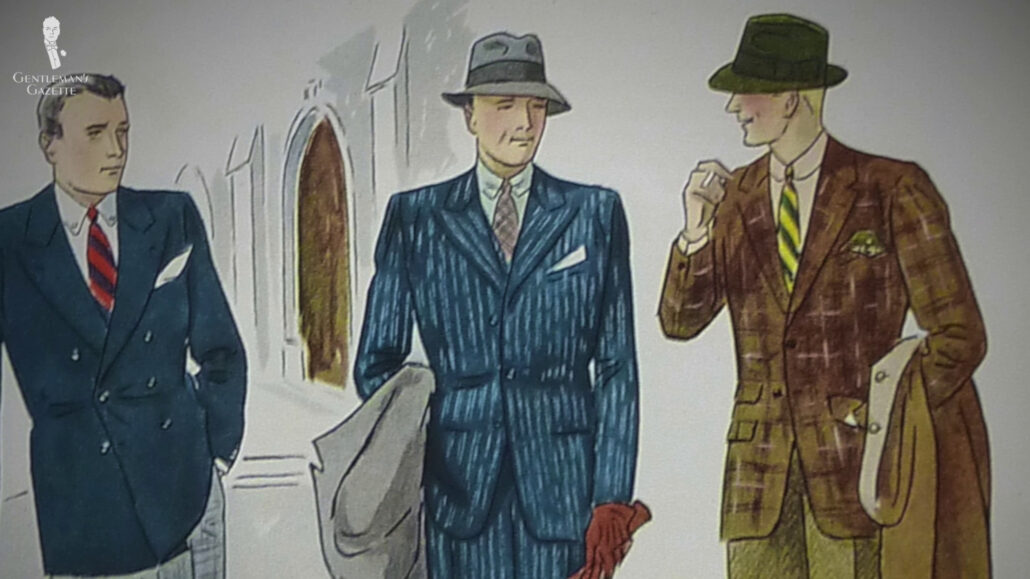
You’ll notice that both categories of looking professional explicitly involve employment, which gives us a big hint about its meaning. Looking professional means wearing clothes and accessories that, at a minimum, are appropriate for work. So you’ll definitely want to avoid anything that I mentioned in the guide on what never to wear to the office.
8 Things Men Should NEVER Wear To The Office
If we turn to the formality scale, according to classic style conventions, professional attire generally ranges from “smart casual” to “traditional business attire,” with many contemporary professional looks existing in the middle as part of “business casual attire.
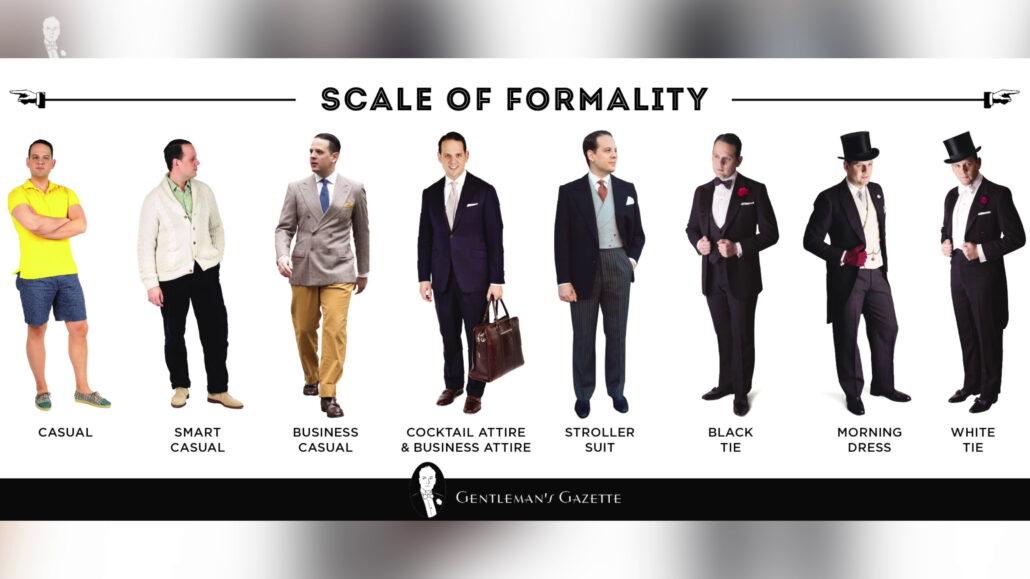
But, how do you determine where on the formality scale you need to be to look professional? The quick answer is: just look like you’ve put genuine effort into your appearance. But, privy advice like that wouldn’t make for a very interesting post, so let’s go deeper by covering all the things that you are achieving when you dress in a professional way.
1. Dressing According to the Conventions of Your Profession
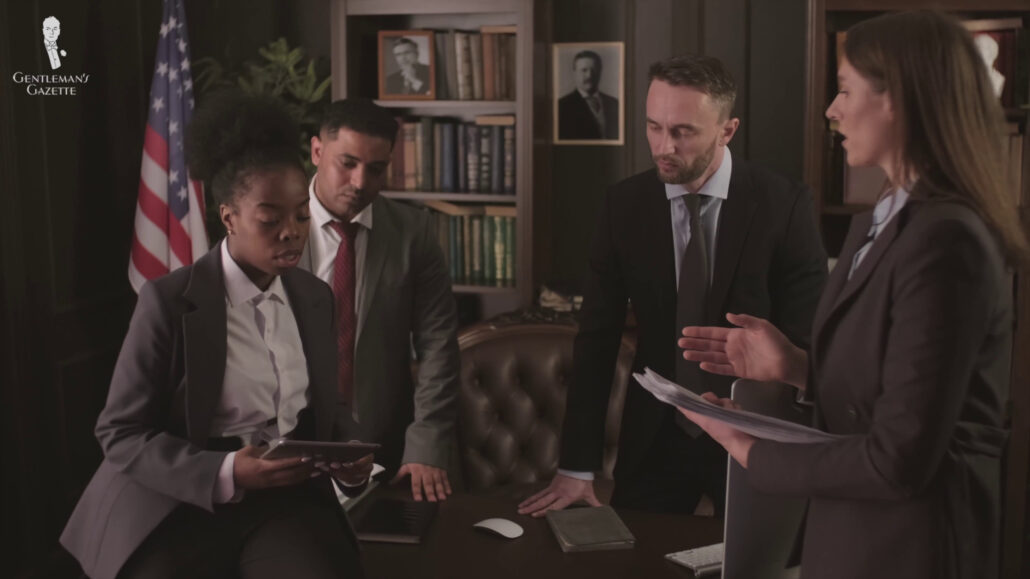
We’ll start by considering the type of work that you do. Looking professional means addressing according to the conventions of your profession. Many jobs that are considered traditionally “professional” have an understood standard of dress.
Lawyers are expected to look a certain way, as are doctors and many office workers, which is why we’ve made guides detailing dressing conventions for these job types. But looking professional also applies to workers outside of this usual professional sphere. In fact, you can easily look professional no matter what you do for a living, but how you do it will change based on the nature of your work.
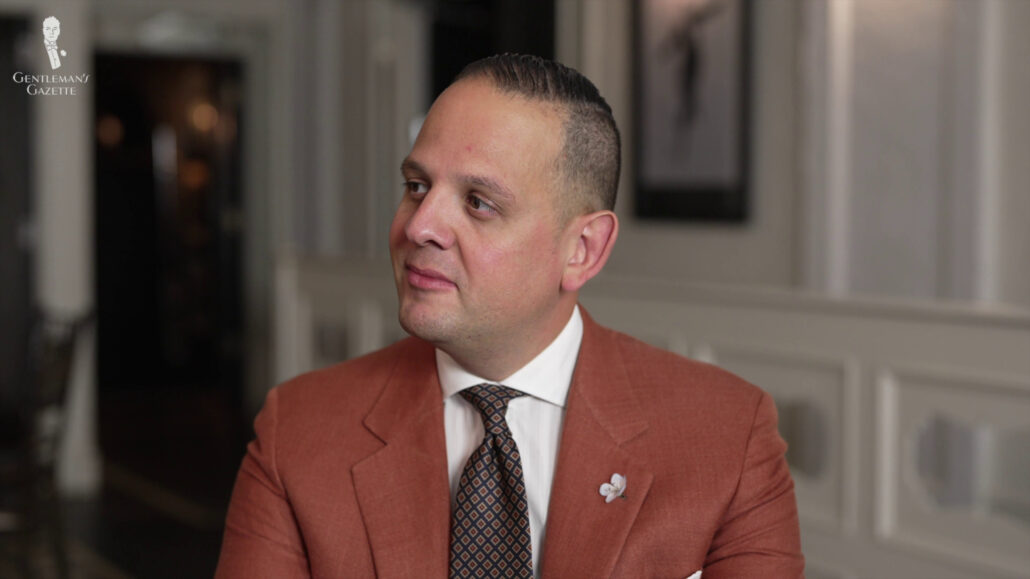
Generally speaking, dressing a step or two up in the formality scale from the minimum requirement for your work will automatically give you a professional air. So, wearing a sport coat and tie usually appears more professional than jeans and a sweater, but remember that “more formal” does not always equal “more professional.” Going into your office in White Tie, which should really be reserved for formal evening occasions, certainly won’t make you look very professional unless you’re a professional magician.
2. Following Workplace Norms
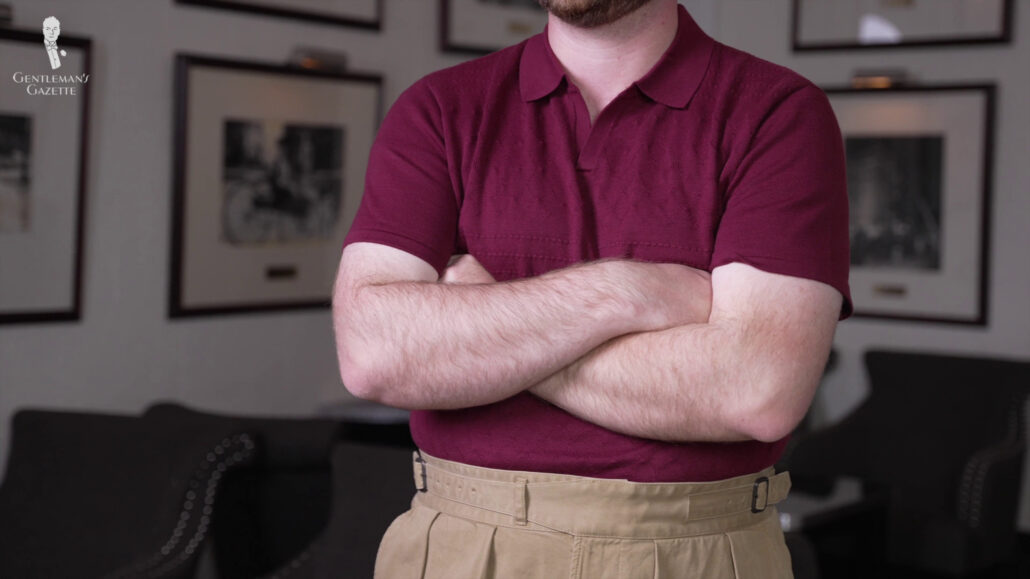
While it’s usually better to be overdressed than underdressed, you can definitely look professional in a polo shirt and trousers, and you can also look unprofessional in a suit. In fact, even traditionally appropriate business attire can be inappropriate if it isn’t compatible with your business culture. Let us explain.
Looking professional means following workplace norms. Many traditional standards of business dress have changed drastically as menswear in broader society have become more casual. Just because bankers used to wear three-piece suits and wing collars every day doesn’t mean that’s always the case now. Determine what professional looks like at your workplace by observing how most of your co-workers dress and dress accordingly.

If wearing a suit would make you look out of place, like you’re not a part of the company, consider not wearing one, even if it would be conventionally appropriate. But opt for a more casual but still classic combination instead.
A big part of looking professional is conveying the sense that you know what you’re doing. Don’t demonstrate misunderstanding by failing to grasp the dress standards of your own place of work.
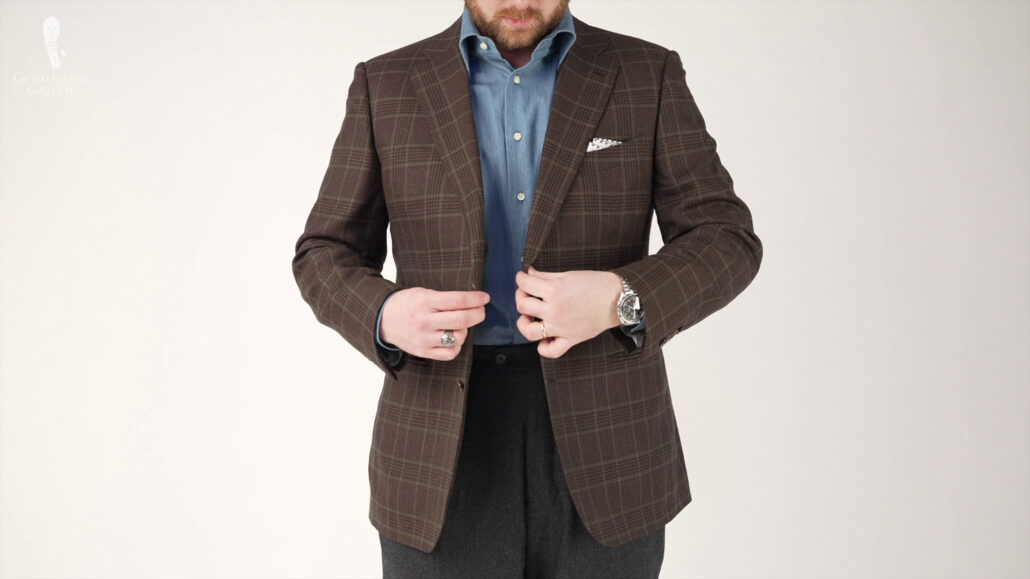
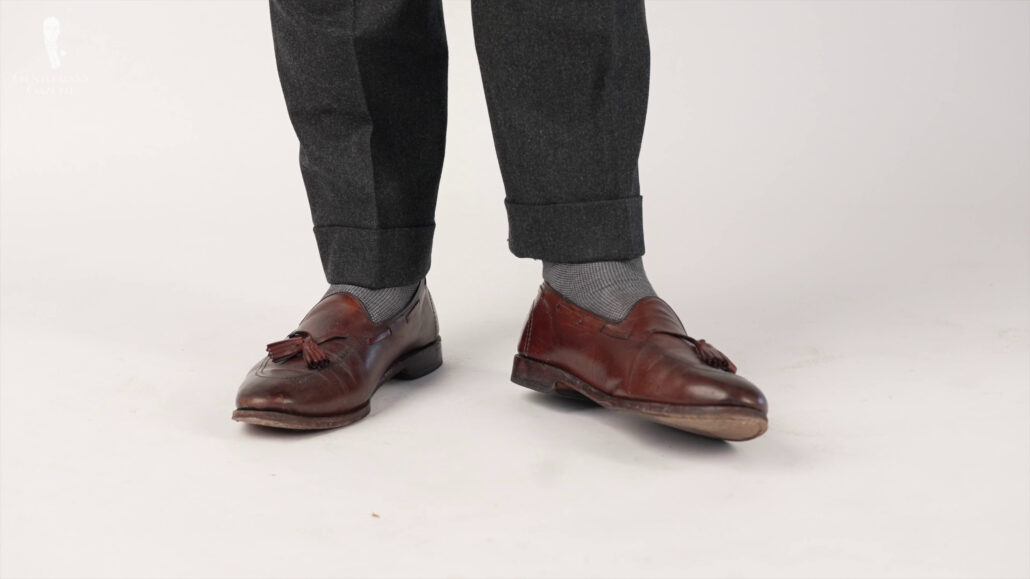
3. Illustrating Commitment to Your Company
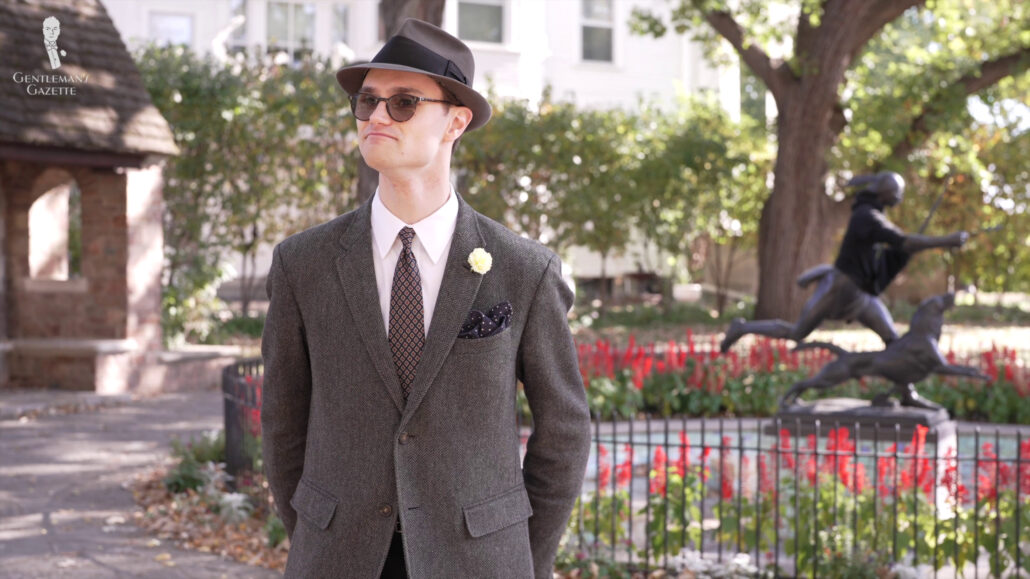
Looking professional means illustrating commitment to your company; taking the time to learn your office’s sartorial culture is just one way that licking professionals shows commitment to your work. Attention to dressing well generally indicates your investment in workplace conventions and a desire to represent your company well.
This conveys to your peers and superiors that you are part of the team and that you understand what is expected of you. It also sets a good example to subordinates by modeling the standards of your work.
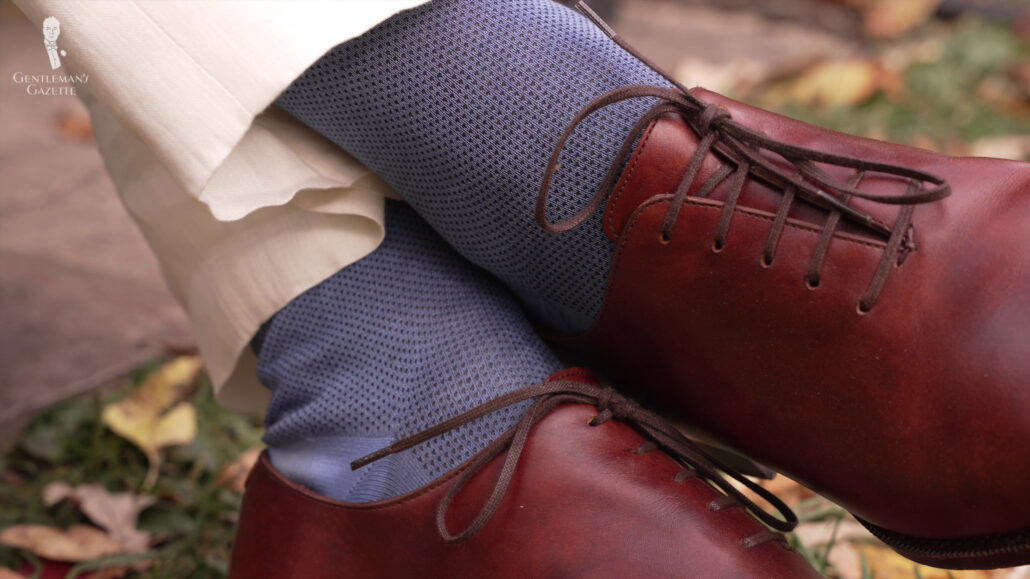
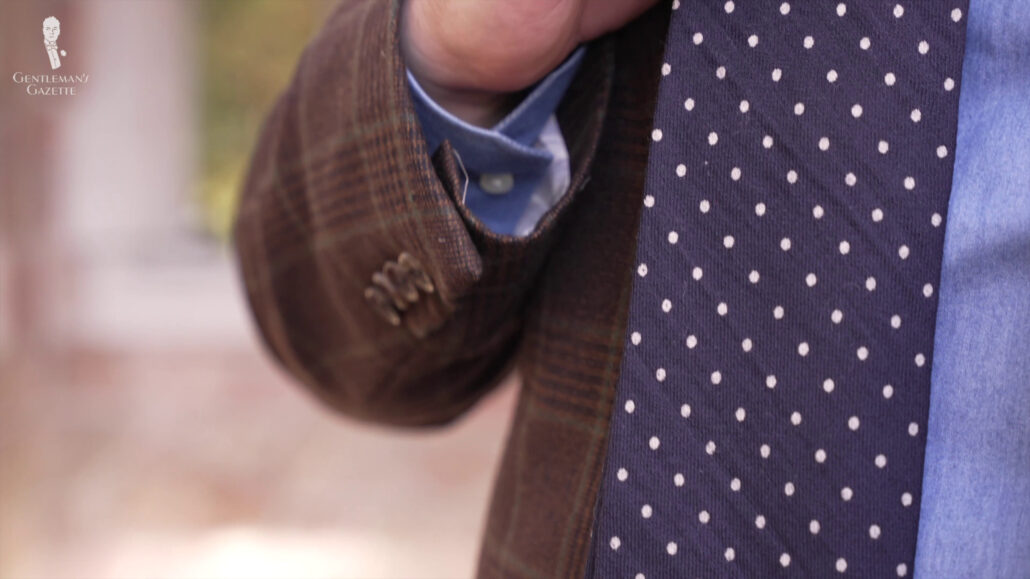
Again, this doesn’t require wearing a full suit every day if that’s not part of your office culture, but taking the time to adjust a few professional elements to your ensemble – like a dignified tie or a well-coordinated dress shirt and jacket – can simply and easily polish your overall image, making it look more professional.
For inspiration, check out our other guide, where I illustrate how to mix professional styles and casual elements.
7 Stylish Ways to Mix Casual & Professional Attire
4. Inspiring Confidence
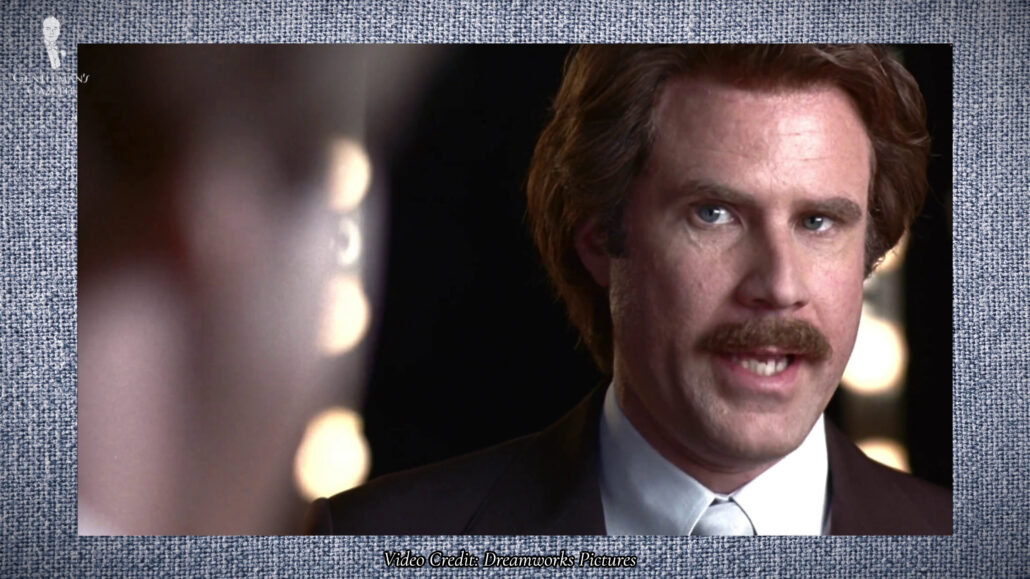
Dressing professionally not only indicates to your co-workers that you understand your company. It also reveals to others, like clients, associates, and even competitors, that you are dedicated enough to take pride in your appearance, capable enough to dress appropriately, and attentive enough to do both things well.
When you are in a client-facing position, you are a representative of and even an advertisement for your company. The way that you carry yourself and dress will directly impact not only how others think about you but how they think about your business.
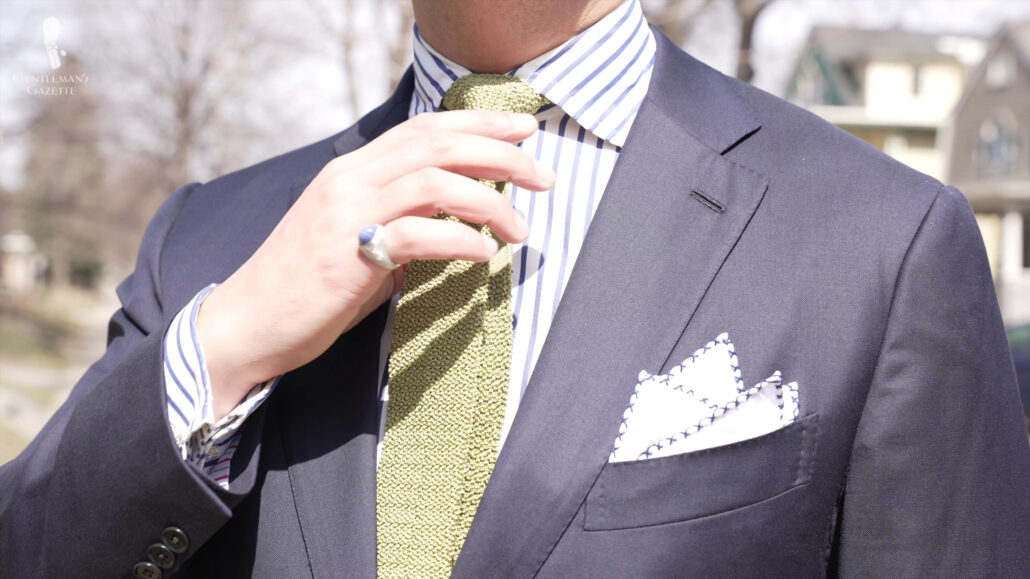
Does dressing well necessarily mean that you are better at your job? No, it doesn’t. The first impression that you convey will automatically indicate how others perceive you, including their perception of how well you do your job.
While it’s not fair to judge people based on appearances, if you had to base your assessment of someone exclusively on how they dress, does it seem more likely that the person in a clean well-pressed suit that is elegantly presented is more dependable or capable than someone who is slovenly attired with an untucked shirt and no real regard to his appearance? A neat, pleasing, and classic look – no matter its formality – will put others at ease because it conveys the impression that you know what you’re doing.
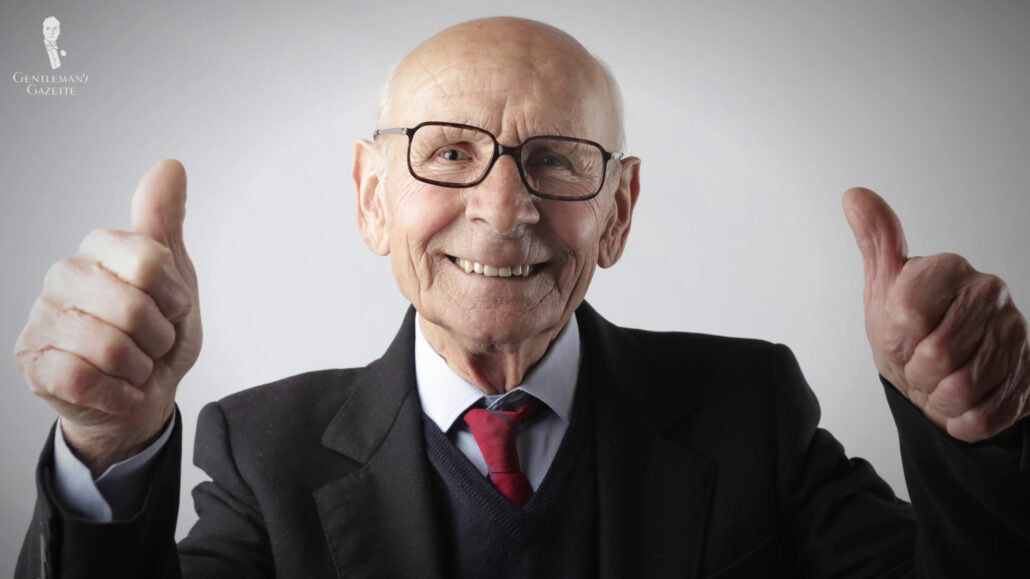
Looking professional conveys that you fully grasp your profession, so others will be more trusting and comfortable with you and more willing to give you the chance to prove yourself professionally because you look professional in the first place. You shouldn’t judge a book by its cover, but you also shouldn’t neglect easy and basic steps that make you look and feel as dependable and as capable as you are.
5. Be Prepared, Active, and Aware
Now that we’ve covered some concepts around looking professional, you’d probably like some more concrete advice, right?
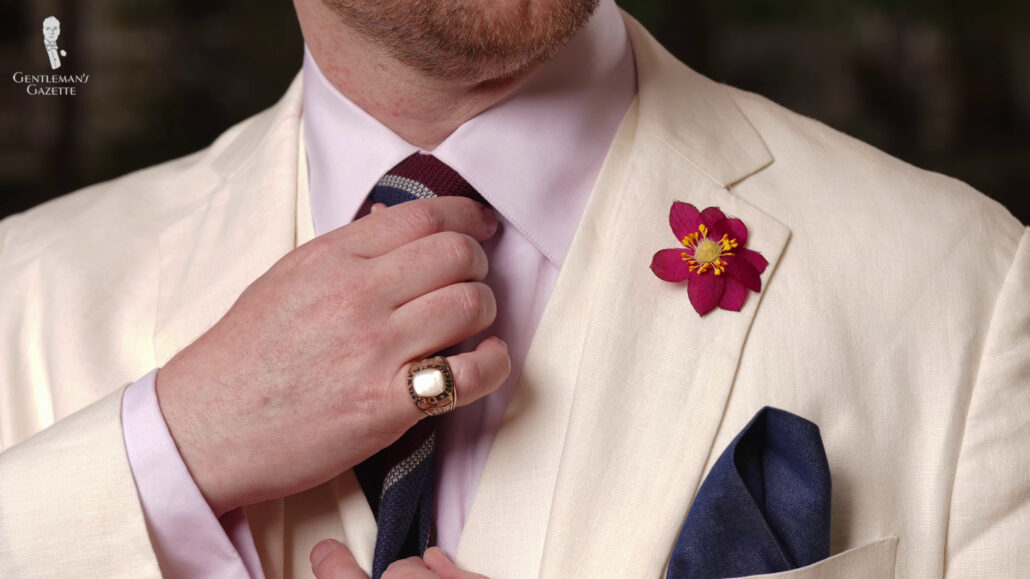
As we hope that we’ve made clear, looking professional consists of basically looking as though you made a genuine effort to improve your appearance – with a focus on clothing that looks good on you, isn’t distracting, and is work appropriate.
Our Gentleman’s Gazette archives are overflowing with advice on how to look your best on a variety of occasions. Let’s highlight some particularly useful advice.
Looking professional means looking prepared, so make sure that you don’t appear rushed, hurried, or overwhelmed. For instance, wearing a dress shirt that is fresh out of the box, that still has crease lines from the packaging, or a jacket with the tack stitching still intact makes it seem like you just ran out, bought new clothes, and put them on without checking them.
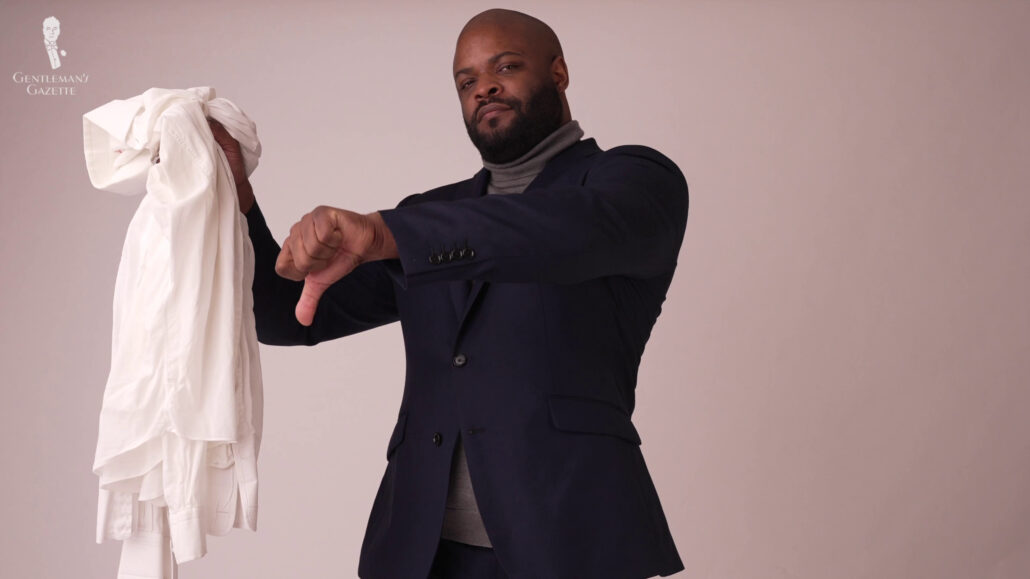
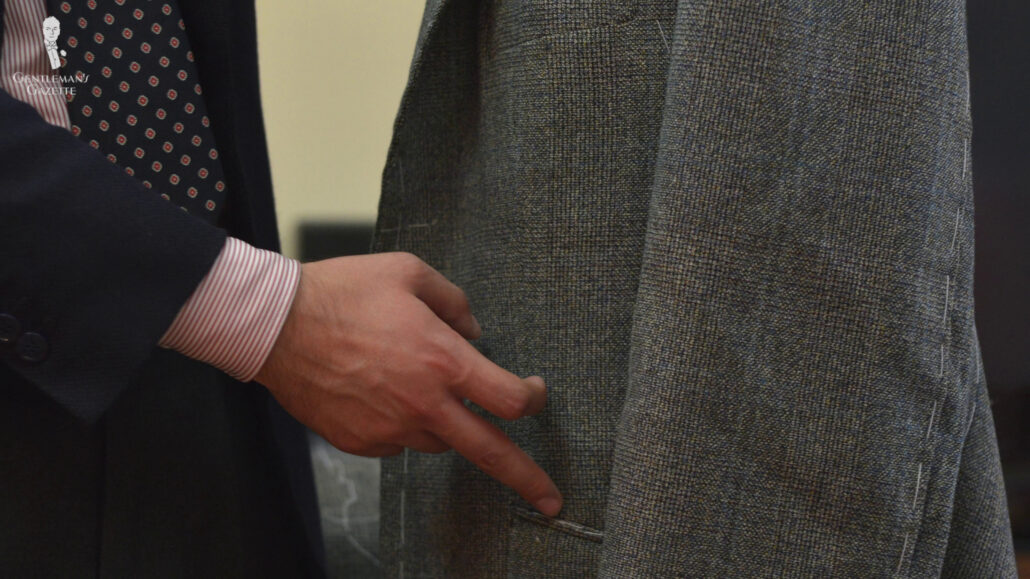
When looking professional, you never want to give the impression that this is the first time that you’ve ever tried to look professional (even if it is) because it can come off as affected and disingenuous.
Similarly, looking professional means being aware and active. So, don’t let unpleasant-appearing, sartorial errors – like puddling pants, a cracked and frayed belt, or overly long shirt cuffs – make it seem like you’ve missed or ignored style mistakes and could therefore be prone to other mistakes, too.
Thankfully you’ll never need to worry about common menswear mistakes again after reading our appropriately-titled ebook, 50 Style Mistakes and How to Avoid Them, which you can download for free.
6. Being Detail-Oriented
Finally, looking professional means being detail-oriented, so make sure that all of your dressing details are on order – with your shirt neatly pressed, your neckwear straight, and your shoes shined.
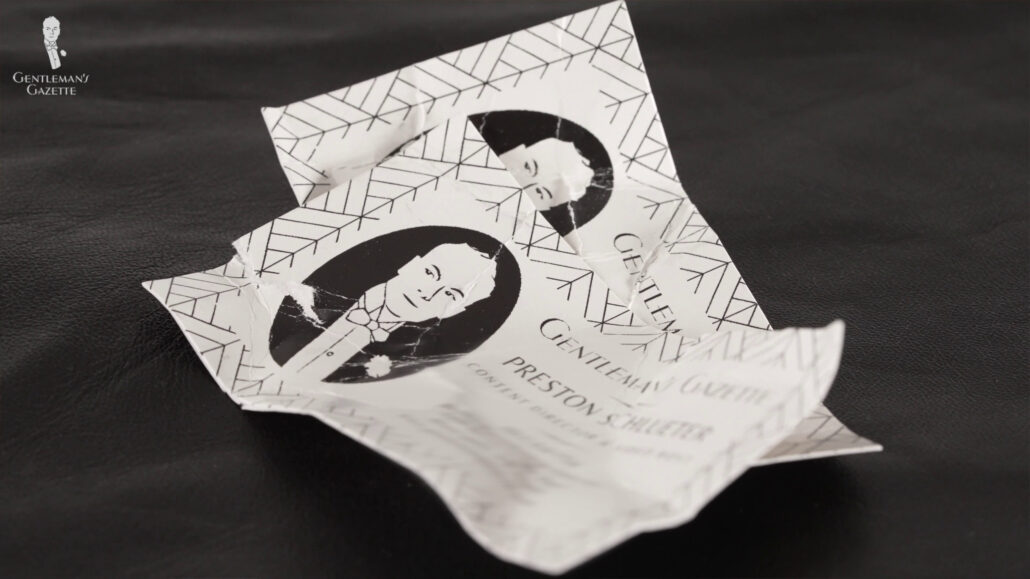
Here’s something else that is often overlooked: the state of your business card. A crumpled, stained business card not only looks unprofessional, it subtly conveys that you don’t care about how you or your business is perceived. So, when you and your perfectly normal associates are comparing business cards, ensure that your business card is well protected with a quality business card case.
Also, don’t neglect your personal appearance. The state of your hair or beard says just as much about you as your shoes or shirt. Peruse our grooming and shaving archives for the best tips on how to look your best.
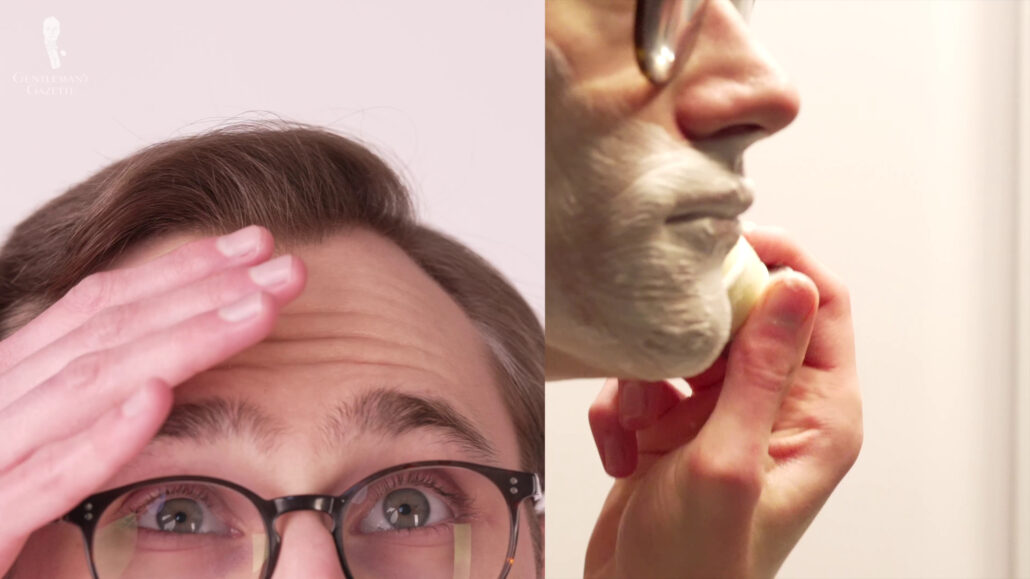
Shaving and Grooming
Another often overlooked detail: the state of your nails. A key tool to fix them: a well-made manicure set. Ensuring a professional appearance by carefully managing every detail of your appearance helps you maximize your positive impressions, while minimizing the negative.
7. Consistently Appearing Professional
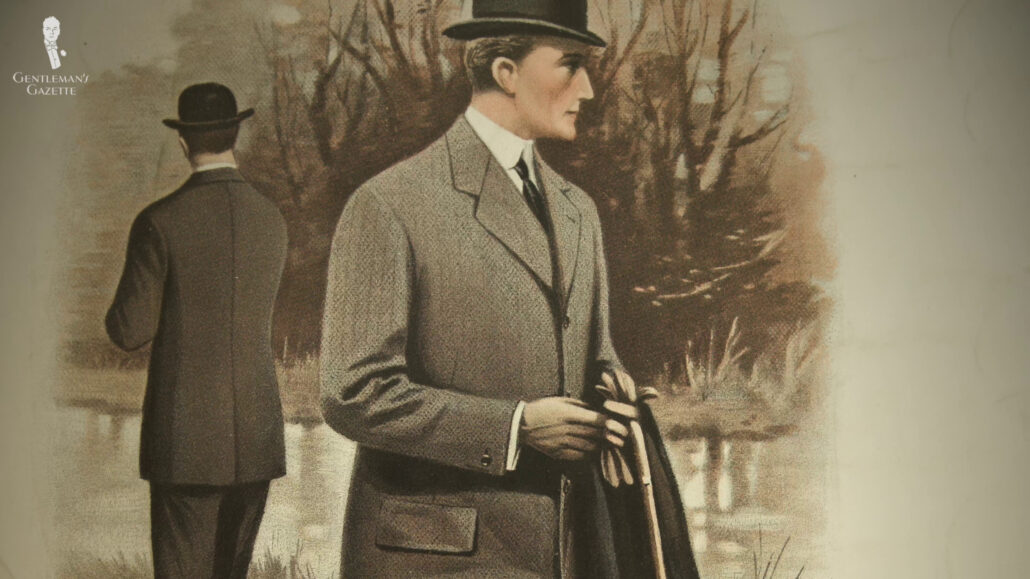

Having a professional appearance is especially important for major events like board meetings or hosting clients, and for when you’re first introduced to the company, which is why we made this guide on what never to wear in an interview. But looking professional should not be reserved for special occasions, setting a consistent standard for professional dress in the workplace will encourage you to do your best every day, while establishing your reputation as a conscious employee and a snappy dresser.
This advice also applies to workplace-adjacent events like networking, conferences, off-site meetings, or interacting with co-workers or clients socially. Just because you’re technically off the clock, it doesn’t mean that you should neglect your looks. You don’t want to ruin the good impression you’ve made in the office with an unkempt appearance outside of it.
8. Dressing to Make Yourself “Feel” Professional, But Also Like Yourself
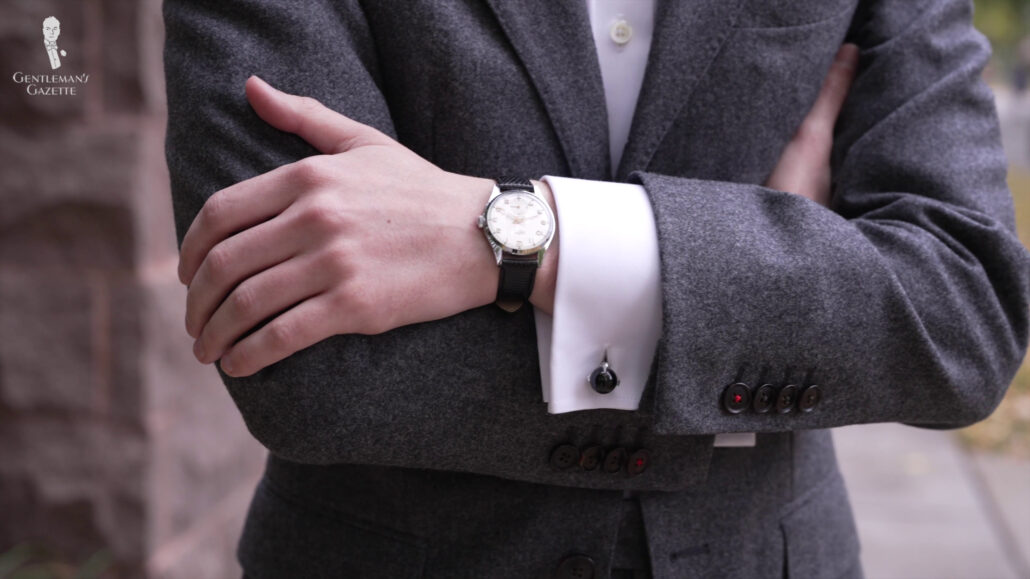
Looking professional means dressing to make yourself feel professional, but also like yourself. In going over what it means to look professional, we hope it’s clear that looking professional does not require looking like an office drone.
Just like dressing in the classic style, professional attire affords many opportunities to inject your personality into your looks, especially with interesting accessories, vibrant colors, and complementary patterns that are all still work-appropriate.
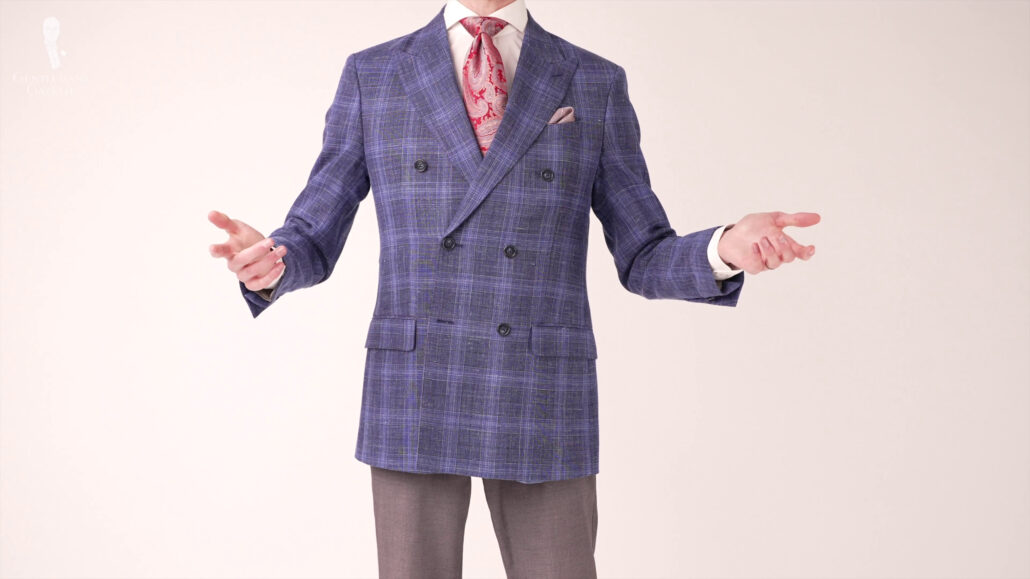
Assembling a professional ensemble that makes you look and feel like a professional person while still looking and feeling like yourself indicates a mastery of the sometimes confusing sartorial concept.
Three Different Professional Outfits
As you can see, there are many ways to look professional. There are as many ways to look professional as there are varieties of stylish gentlemen that are professional. To really bring this point home, let’s run through three outfits that illustrate the variety and versatility of looking professional.
1. Casual Ensemble
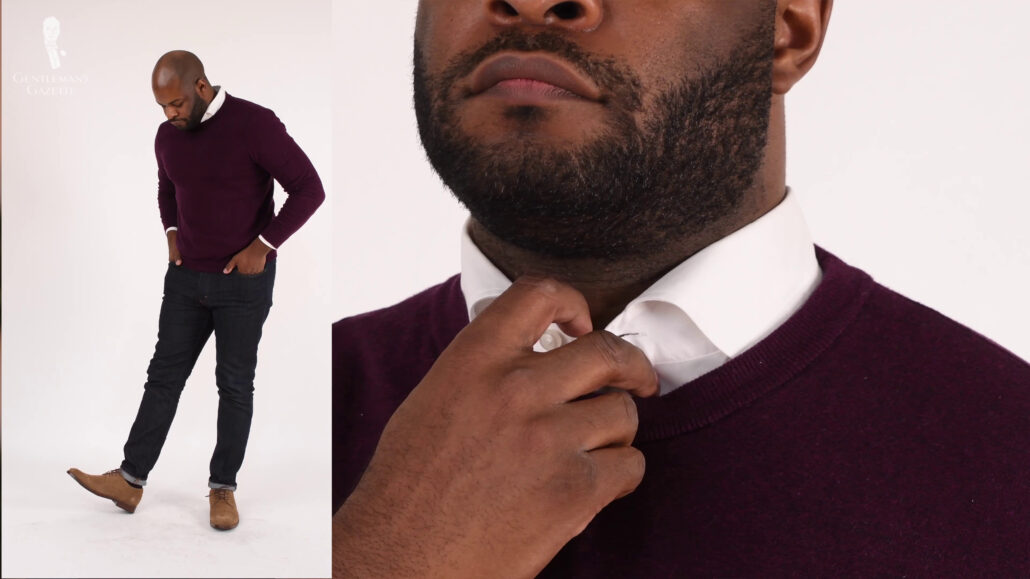
Let’s start with a very casual ensemble to prove that you can look professional in almost any dress code.
Here, I’m wearing a plain white dress shirt; that, because it is a long-sleeved and collared shirt, automatically looks more professional due to its more formal features than the T-shirts, polos, henleys, or other casual shirts that I might wear in the weekend. I am wearing jeans, but they are dark-washed and undistressed, as is typical for more formal denim. And the addition of a burgundy sweater dresses up the entire look because it’s a formal color like navy, charcoal, brown, and medium gray.
We’ll note that the use of layering like this sweater is a simple and easy way to create a professional appearance, even if it just involves throwing on a jacket or a blazer, as Illustrated in our next look.
2. Business Casual Ensemble
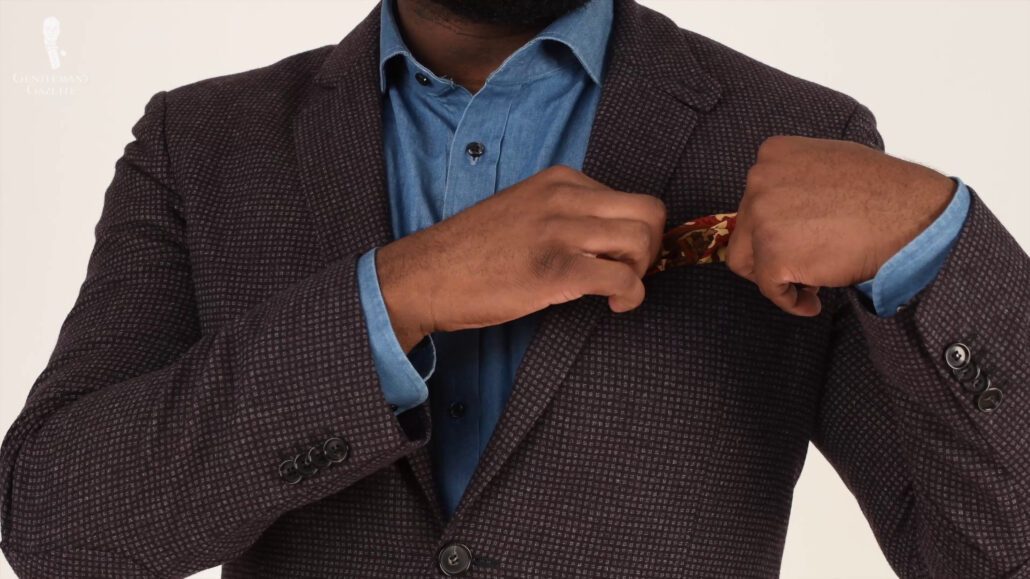
Here’s a more formal business casual ensemble, in which the addition of a sport coat and pocket square effortlessly elevates khaki chinos and a blue denim shirt.
3. Formal Business Attire
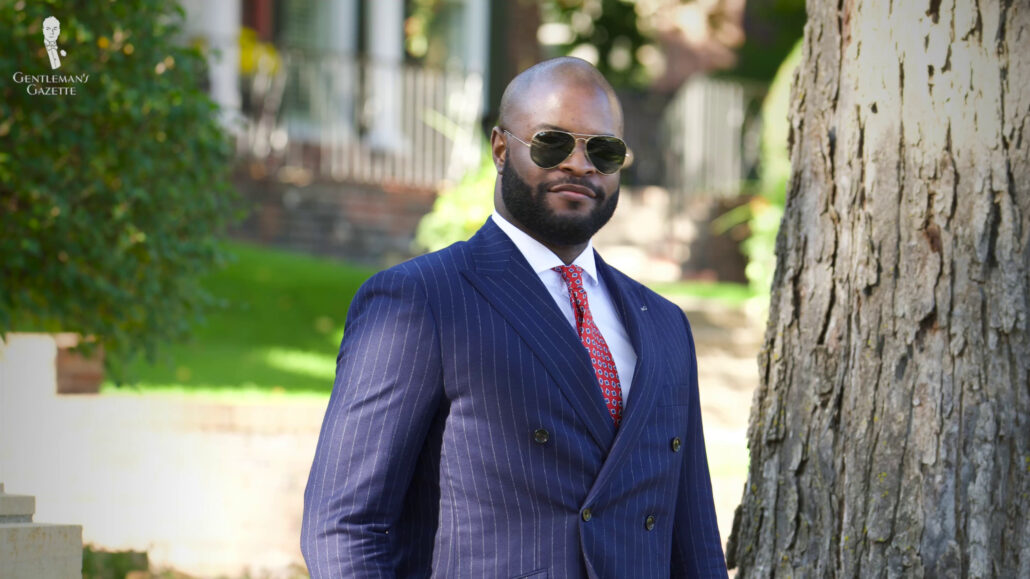
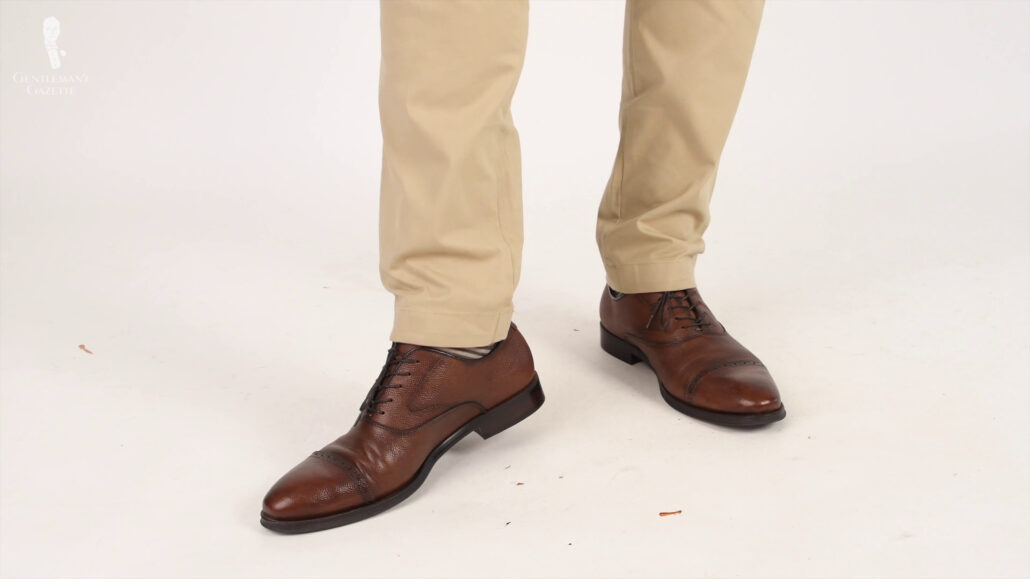
Finally, for a formal business attire look: let’s pair a stately, double-breasted, blue, pinstripe suit with a very business-appropriate white dress shirt with a vibrant tie and a red and buff pattern for a bit of color. “More formal” does not have to mean “more boring.”
For all these outfits, you’ll notice that I wore leather shoes. From suede derbies up to brogue derbies, leather shoes, even if they’re dress sneakers, can make almost any look appear more professional. While, conversely, few things look more unprofessional than a formal suit dragged down by too-casual athletic shoes, unless you are jogging to work. Shoes like these just don’t make sense with a professional ensemble.
Conclusion
We would say that putting in an effort to elevate one’s appearance in order to make a positive impression, usually in a workplace capacity, by dressing to a high standard of neatness, good fit, and aesthetic appeal, without distraction and with an air of capability and dependability, befitting someone who is gainfully employed. Simply put, when they see you, people should assume that you’re on your way to work and that you’re good at your job.
We hope that by better understanding what looking professional means, you’ll be inspired to create your own unique and memorable professional looks. Let us know in the comments what professional looks like where you work and if what I’m wearing today would be sufficiently professional for your office.
Outfit Rundown
Today, I’m wearing a navy suit with a red-and-white striped button-down shirt, a Fort Belvedere pocket square, leather dress shoes, and a Fort Belvedere set of socks. Check out the Fort Belvedere shop for socks like these.
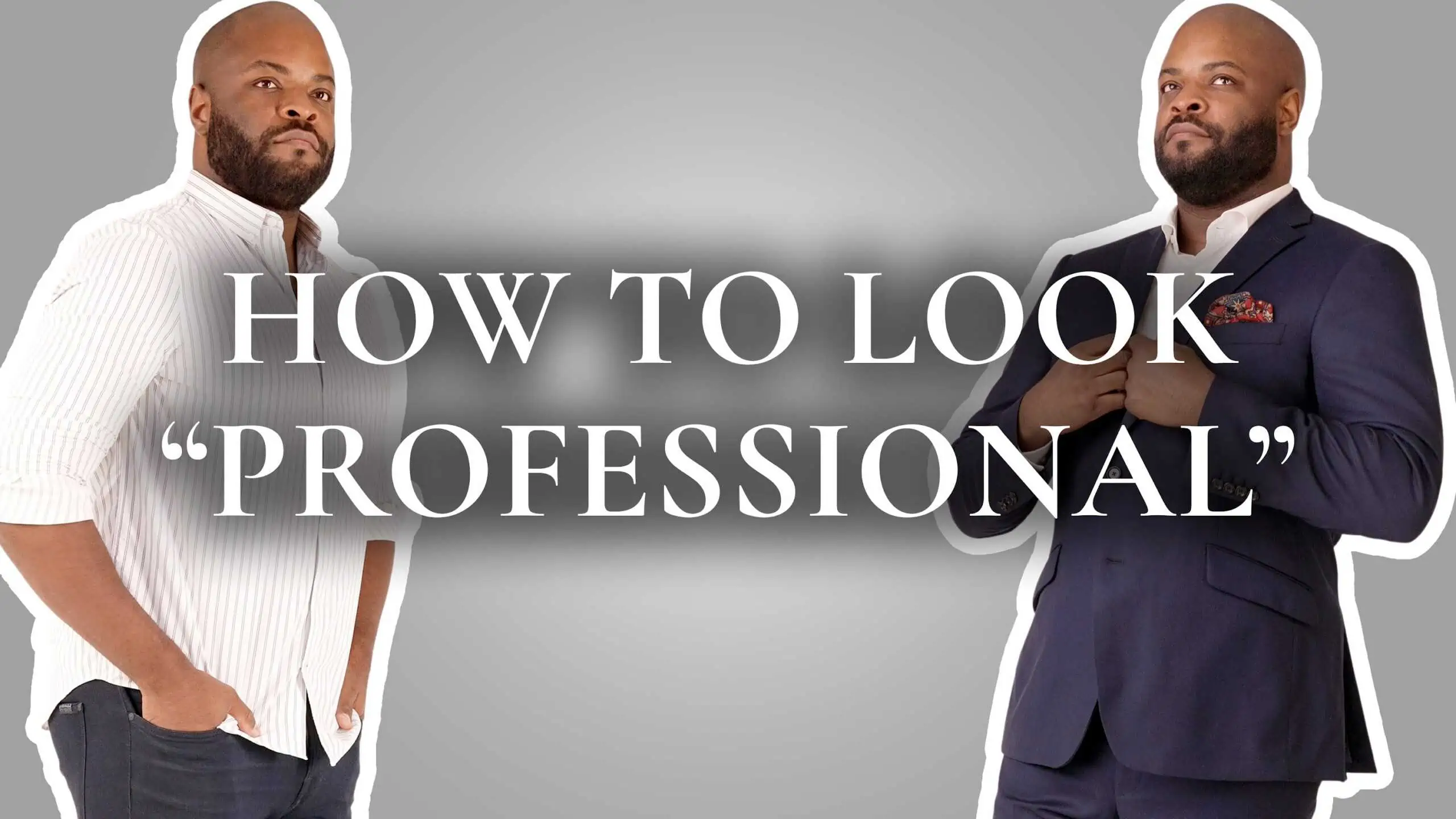
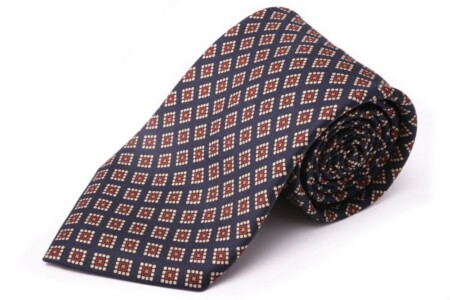



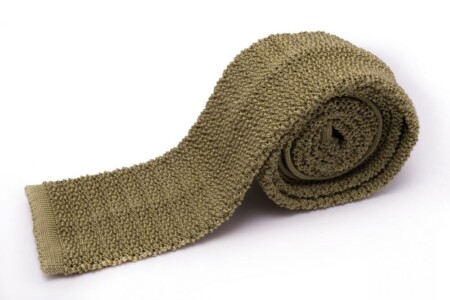
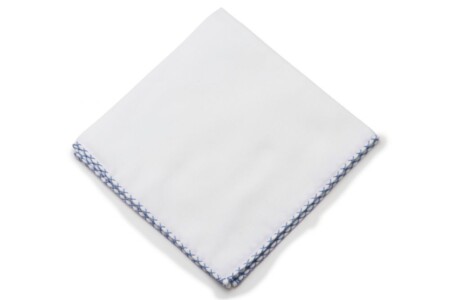
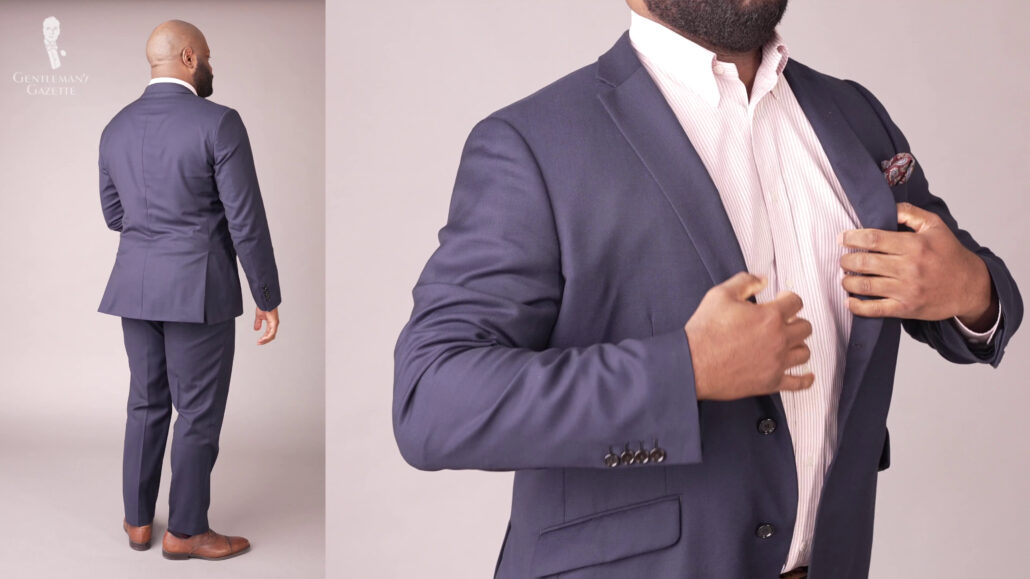
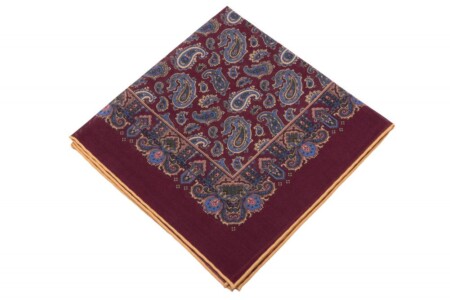
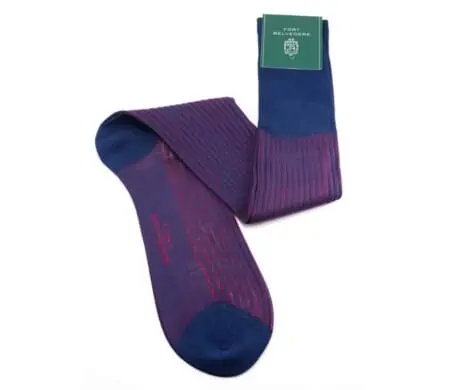
Hint: looking professional doesn’t = suit without a tie. The single exception being a casual suit. I can understand dressing a casual suit down although my preference would be a turtleneck. Wearing a suit like the one Kyle wears with a formal white dress shirt sans tie? It screams of ‘I accidentally forgot to put on my tie.’
Ditto
As a regular lurker at the Gentleman’s Gazette, I am usually deeply impressed by the quality of your articles and the depth of your knowledge of classic menswear, accessories and lifestyle tips. This article, I regret to say, feels rather less educational than your usual excellent guides in part because it seems contrary to the spirit of your other articles.
Your other articles and videos on matching colors or wearing unconventional colors showed how to demonstrate personal style and individual flair when otherwise restricted by formal or professional norms of appearance, while the advice given here seems tiringly conformist and a touch depressing. I mean this as positive criticism from someone who has found your other articles immensely helpful.
Thanks for taking the time to comment, Donnager, it’s useful to hear your feedback. Hopefully it’s understood that dressing for the workplace will require an element of conformity, as dressing too far outside of your workplace’s norms will likely garner negative, not positive attention. Once people have figured out what level of dress works well for their workplace, they’ll be able to start injecting their personality within this framework.
Thank you for clearing things up, Jack. Perhaps this just wasn’t the article for me, because I usually have the opposite problem. I find it all too easy to identify professional dress norms in my setting, even though many of the professionals I’ve seen are quite badly dressed even when they follow the norms (horribly ill-fitting suits, etc.). It’s when it comes to actually dressing well and “injecting my personality”, to use your phrase, that I look to GG for guidance.
Thank you for clearing things up, Jack. Perhaps this just wasn’t the article for me, because I usually have the opposite problem. I find it all too easy to identify professional dress norms in my setting, even though many of the professionals I’ve seen are quite badly dressed even when they follow the norms (horribly ill-fitting suits, etc.). It’s when it comes to actually dressing well and “injecting my personality”, to use your phrase, that I look to GG for guidance.
The outfit with the caption “Never lose your sense of style” is a perfect example of someone having lost it. Perhaps it may be returned for a refund at the Emmet Kelly estate sale from which it was acquired.
While I would not go to the extent of the Emmett Kelly comparison, I agree that it looks far too much like dressing down a DB jacket for a party rather than a professional look. The clash between the bold checks on the jacket (Are those Glen Checks or Prince of Wales?) and the bold patterned tie ruin the excellent balance of colours.
I agree with “William” this style should have been left in the “closet”
I think they use to dress like this as a “Vaudeville entertainer” the only thing missing is the “straw hat, the cane and a pair of “spectators” to finish the look.
Definitely not my style, now or anytime in the future.